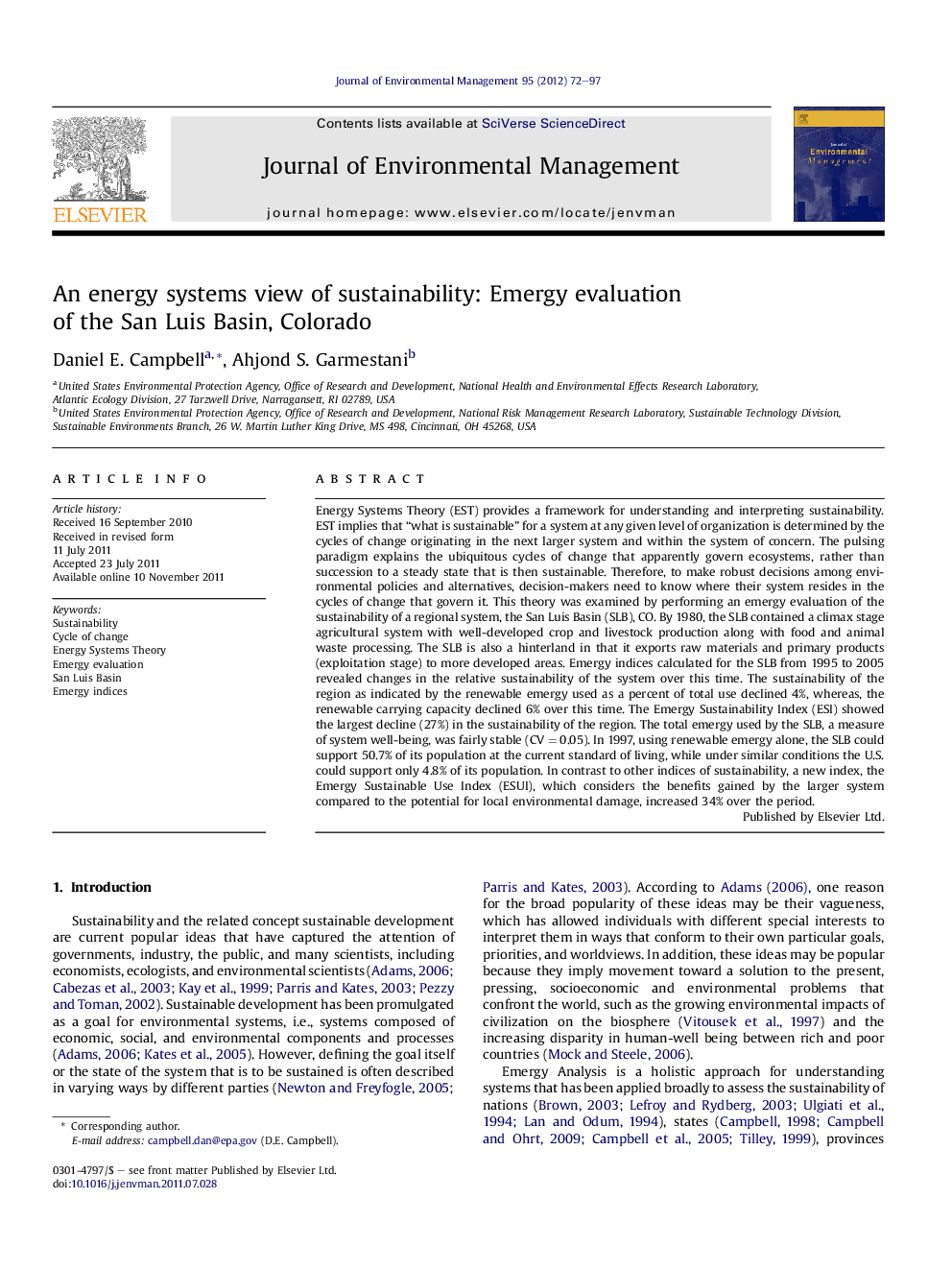| کد مقاله | کد نشریه | سال انتشار | مقاله انگلیسی | نسخه تمام متن |
|---|---|---|---|---|
| 1056922 | 947053 | 2012 | 26 صفحه PDF | دانلود رایگان |

Energy Systems Theory (EST) provides a framework for understanding and interpreting sustainability. EST implies that “what is sustainable” for a system at any given level of organization is determined by the cycles of change originating in the next larger system and within the system of concern. The pulsing paradigm explains the ubiquitous cycles of change that apparently govern ecosystems, rather than succession to a steady state that is then sustainable. Therefore, to make robust decisions among environmental policies and alternatives, decision-makers need to know where their system resides in the cycles of change that govern it. This theory was examined by performing an emergy evaluation of the sustainability of a regional system, the San Luis Basin (SLB), CO. By 1980, the SLB contained a climax stage agricultural system with well-developed crop and livestock production along with food and animal waste processing. The SLB is also a hinterland in that it exports raw materials and primary products (exploitation stage) to more developed areas. Emergy indices calculated for the SLB from 1995 to 2005 revealed changes in the relative sustainability of the system over this time. The sustainability of the region as indicated by the renewable emergy used as a percent of total use declined 4%, whereas, the renewable carrying capacity declined 6% over this time. The Emergy Sustainability Index (ESI) showed the largest decline (27%) in the sustainability of the region. The total emergy used by the SLB, a measure of system well-being, was fairly stable (CV = 0.05). In 1997, using renewable emergy alone, the SLB could support 50.7% of its population at the current standard of living, while under similar conditions the U.S. could support only 4.8% of its population. In contrast to other indices of sustainability, a new index, the Emergy Sustainable Use Index (ESUI), which considers the benefits gained by the larger system compared to the potential for local environmental damage, increased 34% over the period.
► Energy Systems Theory provides a framework for understanding sustainability.
► Position in the pulsing cycle of change is fundamental to knowing what is sustainable.
► The percent renewable emergy used in the system declined 4% from 1995 to 2005.
► The Emergy Sustainability Index showed the largest decline (27%) over the period.
► However, the Emergy Sustainable Use Index increased 34% over the period.
Journal: Journal of Environmental Management - Volume 95, Issue 1, March 2012, Pages 72–97